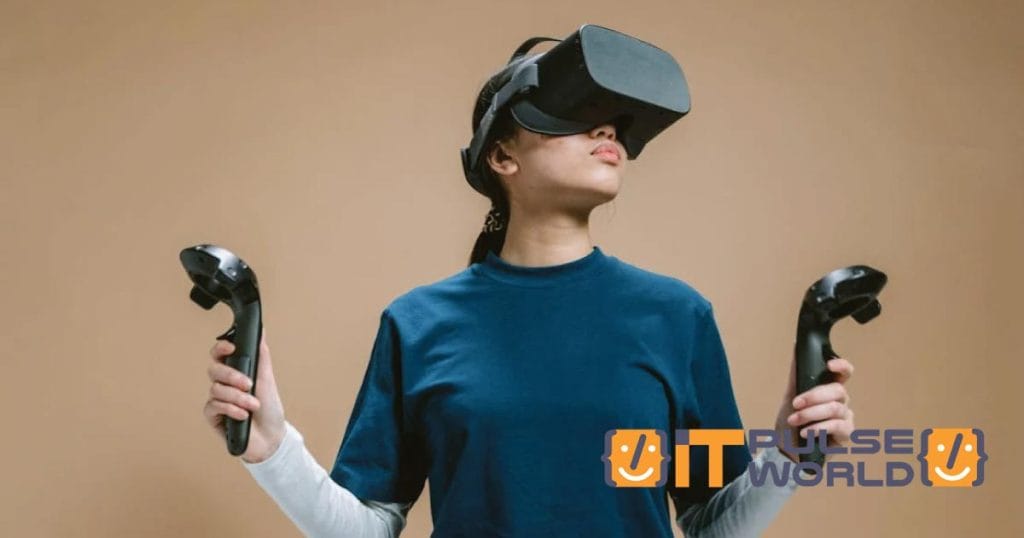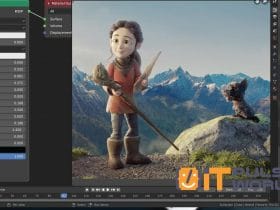Stories behind the viewfinder: Immersive narratives through Virtual Reality
LATEST POSTS

Welcome to Worlds of ITpulseWorld, where history comes to life through virtual ITpulseWorld! Dive into the fascinating world of visual art and discover immersive narratives in Virtual Reality. In our feature article “ Stories Behind the Viewfinder: Immersive Narratives Through Virtual Reality,” we will explore the intersection between technology and art to create unique experiences.
Are you ready to explore new creative horizons? Step right up; the digital canvas awaits!
Introduction
What are immersive narratives in Virtual Reality?
Immersive narratives in Virtual Reality are experiences that seek to immerse the viewer in a three-dimensional virtual environment, where visual and auditory elements are combined to create a feeling of presence and active participation in the story. These narratives use advanced technology to transport the user to fictional worlds or recreations of reality, allowing them to explore and live experiences in a totally new and immersive way.
In the context of visual art, immersive narratives in Virtual Reality become a powerful tool for artists, who can create interactive works that challenge the traditional boundaries of art and allow the viewer to experience the work from multiple perspectives.
With Virtual Reality, artists can create innovative projects that invite viewers to immerse themselves in complex stories, explore different points of view, and actively participate in creating meaning through their interaction with the work.
Importance of Visual Art in Virtual Reality
Visual art plays a fundamental role in the development and expansion of Virtual Reality, as it allows for the exploration of new forms of artistic expression and narrative that go beyond the limits of the canvas or traditional sculpture. Through visual art in Virtual Reality, artists can experiment with the creation of immersive, interactive, and participatory environments that challenge the viewer’s perception and invite them to explore alternative worlds.
Furthermore, visual art in Virtual Reality opens up new possibilities for interdisciplinary collaboration, allowing artists, designers, programmers and technology experts to come together to create unique experiences that fuse art, technology and narrative in an innovative way.
In this sense, visual art in Virtual Reality not only expands the boundaries of creativity but also offers new forms of communication and expression that can profoundly impact the way we perceive and experience art in the digital age.
History of visual art in virtual reality
Virtual Reality (VR) has revolutionized the way we experience visual art, allowing us to immerse ourselves in creative worlds in a way never seen before. The origins of VR in art date back to the 1960s, when experimental artists began exploring new forms of expression using emerging technology.
One of the important milestones in the history of VR in art was the creation of interactive virtual environments that allowed viewers to explore and engage with the artwork in a whole new way. This technological evolution opened the doors to a wide range of creative and narrative possibilities in the world of visual art.
Today, VR has become a fundamental tool for artists and creators, who use this technology to create immersive and engaging experiences that challenge the traditional boundaries of art. From interactive installations to 360-degree virtual reality experiences, VR has expanded the horizon of visual art and allowed viewers to explore new forms of visual narratives.
Techniques for Creating Immersive Narratives in Virtual Reality
Using interactivity and sensory immersion
One of the most effective techniques for creating immersive narratives in Virtual Reality is the use of interactivity and sensory immersion. Interactivity allows users to actively explore the virtual environment, making decisions that affect the development of the story. This creates a greater sense of control and participation in the narrative, which increases the feeling of immersion.
Sensory immersion is achieved through the use of visual and sound effects that transport the user to a convincing and realistic virtual world. The quality of the graphics, lighting, sound effects, and integration of music are key elements in creating an immersive and exciting experience.
By combining interactivity with sensory immersion, content creators can design narrative experiences in VR that captivate users and fully immerse them in fascinating and memorable virtual worlds.
Application of non-linear narrative in virtual environments
The application of non-linear narrative in virtual environments is another important technique for creating immersive experiences in Virtual Reality. Unlike traditional linear narrative, where the story follows a predefined path, non-linear narrative allows users to explore the plot in a non-sequential manner, taking different paths and discovering multiple possible endings.
This technique encourages exploration, experimentation, and decision-making by users, which increases replayability and a sense of discovery in the virtual experience. By offering multiple paths and outcomes, content creators can give users a sense of freedom and control over the story, enriching the narrative experience in VR.
Non-linear storytelling in virtual environments opens up new creative possibilities for telling stories in innovative and engaging ways, allowing users to immerse themselves in complex and fascinating virtual worlds where their decisions have a direct impact on the development of the plot.
Importance of aesthetics and design in the immersive experience
Aesthetics and design play a fundamental role in creating immersive experiences in Virtual Reality. The visual quality of virtual environments, characters, and objects influences the user’s immersion and ability to feel part of the story. Careful and detailed design, taking into account aesthetic coherence and visual harmony, contributes to creating a credible and attractive virtual world.
Furthermore, aesthetics and design impact the usability and accessibility of the virtual experience. An intuitive and well-designed interface facilitates the user’s interaction with the virtual environment, allowing them to fully enjoy the narrative and interactive features. Aesthetic consistency, attention to detail, and creativity in design are key to providing an immersive and engaging experience in Virtual Reality.
The combination of attractive aesthetics, thoughtful design and immersive narrative are essential elements to create high-quality immersive experiences in Virtual Reality, where users can explore, interact and immerse themselves in captivating and exciting virtual worlds.
The cultural intersection of visual art and virtual reality
Influences of artistic movements in immersive narratives
Immersive narratives in Virtual Reality have been influenced by a wide range of artistic movements throughout history. For example, Surrealism has impacted the creation of virtual worlds where imagination and fantasy are uniquely combined. Similarly, Impressionism has inspired the representation of light and color in virtual environments, creating immersive and emotional atmospheres for the viewer.
Abstraction has also left its mark on immersive narratives, allowing artists to explore shapes, textures, and compositions in innovative ways in virtual space. These artistic influences merge into Virtual Reality to offer unique visual experiences that challenge perception and transport the viewer to imaginary worlds.
The combination of classic and contemporary artistic movements in immersive narratives in Virtual Reality opens up a range of creative possibilities that continue to evolve and surprise audiences around the world.
Exploring Cultural Identities Through Virtual Reality
Virtual Reality has become a powerful tool for exploring and representing cultural identities on a global level. Through immersive experiences, artists can create virtual environments that reflect the cultural diversity of different regions of the world, allowing viewers to immerse themselves in unique traditions, stories, and perspectives.
From the recreation of historic archaeological sites to the representation of contemporary cultural celebrations, Virtual Reality offers a platform for the preservation and dissemination of cultural heritages in an interactive and immersive format. This exploration of cultural identities through Virtual Reality not only promotes diversity and intercultural understanding, but also provides new forms of artistic and narrative expression.
By combining technology and creativity, visual artists can use Virtual Reality to give voice to marginalized communities, celebrate the world’s cultural richness, and foster a global dialogue about the importance of cultural diversity in today’s society.
Collaborations between visual artists and Virtual Reality developers
Collaborations between visual artists and VR developers have resulted in unique immersive experiences that fuse traditional art with cutting-edge technology. These creative partnerships allow for the exploration of new forms of artistic expression, challenging the boundaries of the visual and interactive in virtual space.
Visual artists bring their artistic, narrative, and aesthetic vision to VR projects, while developers bring their technical expertise and programming knowledge to bring these digital creations to life. This interdisciplinary collaboration results in immersive sensory experiences that go beyond the traditional boundaries of art, offering audiences the opportunity to engage in interactive stories and explore virtual worlds in innovative ways.
The synergy between visual artists and Virtual Reality developers has proven to be a fertile field for creative experimentation and technological innovation, opening up new possibilities for artistic creation and digital storytelling in an increasingly interconnected and visually stimulating world.




